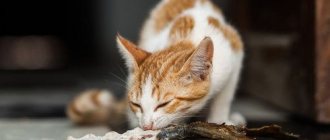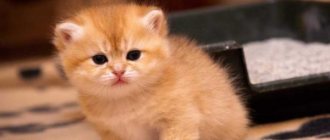Why cats are afraid of water: Pxhere There is probably no sweeter and more capricious creature in the world than a cat. These furry purrs can lift your spirits with their mere presence, can entertain and touch you with their manners, and some breeds even help a person cope with illnesses. Let's look at why cats are afraid of water and how to correct your pet's behavior.
Why are cats afraid of water?
Animals act in accordance with natural instincts.
For predators, the primary goals are food and safety. The prejudiced attitude of pets towards water is associated precisely with these two postulates. Wet fur is a direct threat to the life of cats. The fur loses heat due to moisture and the body freezes. Animals are afraid of getting too cold. Surprisingly, if you wrap a freshly washed cat in a thick blanket, it will still shiver from the cold. More precisely, from fear of freezing.
Wool also serves as protection against overheating. Therefore, cats can lie all day in the hot sun without any problems. Subconsciously afraid of losing this ability, even in severe heat they avoid cool bodies of water.
Another point regarding safety is the risk of infection by pathogens during the washing process. And animals wash themselves 10 times a day. Street sewage and wet fur are an unfortunate combination. A humid environment is a source of bacterial growth. Dirt from dry hairs is less dangerous. Moreover, pets periodically regurgitate hairballs.
In addition, raw fur has a specific smell. This smell will scare away the prey during a hunt. Moreover, it will become noticeable to enemies. For example, on the outskirts of cities and villages, animals can be attacked by hungry wild animals - a bear, a wolf, a lynx, a fox. In cities these are stray dogs.
Thus, it would be more correct to say that cats avoid getting wet, rather than being afraid of water as such. Moreover, they all naturally know how to swim, but they do it extremely rarely.
Smell matters!
Cats have a sense of smell that is superior to humans. The average person has about 5 million receptors in their nose, while a cat has about 200 million.
Cats use scent to communicate, hunt, and detect predators. Cats even use the scent of their urine to mark their territory from other cats. According to research, smell is the primary method by which a cat analyzes its surroundings. Smell can make a cat feel either tense or secure in a certain environment.
Have you ever seen a cat grin strangely when it snorts? This is because, in addition to the nose, cats have another organ called the vomeronasal organ, located on the roof of their mouth. This organ is used when cats require a more in-depth scent analysis.
The Flehmen response in cats is to release scent into the vomeronasal organ, located at the top of the mouth.
Obviously cats are quite sensitive to smells, but what does this have to do with water? Actually, very big.
There are many chemicals and dissolved substances in water. And cats, with their sense of smell about 14 times better than humans, can detect most of them. This is one of the reasons why cats don't want water all over their bodies. They don't want unnecessary odors left on them! Just think about how strong the smell of chlorine in the water will be for our poor little cats.
In addition, cats rub against people, furniture, or other objects to transmit their scent. Therefore, water that gets on the fur can wash away this specific smell from the cat’s body, which it uses to determine its identity.
Are sphinxes afraid of water?
On the contrary, veterinarians advise hairless cats to be bathed regularly. Otherwise they will start to smell unpleasant. Sphinxes perceive bathing adequately - without resistance. But they still freeze.
Among other purebred representatives there are real fans of swimming - the Bengal cat, Rex, Turkish Van, Kurilian bobtail and others. The love of water is more common in pets. They do not fight for survival, but simply enjoy life. Street animals (even those that have a home and owner) behave more carefully. They have a more developed instinct of self-preservation.
Breeds that favor water procedures
While not all Whiskered Purrs enjoy being in the water, some breeds enjoy swimming more than others. Moreover, their anatomical physique allows them to be excellent swimmers by nature.
Turkish Angoras are one of the breeds that love to swim, which is why they are often called “swimmers.” These representatives have a body perfectly adapted for being in an aquatic environment - they have long limbs with rounded paws.
Maine Coons are also big fans of baths, although they are considered one of the largest domestic breeds. Their robust bodies are suited to hold up well in unstable environments. Being in a filled bath, Maine Coons are happy to wallow and are ready to spend a lot of time there.
Bengals are also excellent swimmers, and because they are descended from Asian leopard relatives, they retain a natural instinct to splash and play in the water. They happily quench their thirst straight from the tap and are ready to sit in the sink all day in hot weather.
Sphynx cats do not have fur and therefore do not experience the inconvenience of getting wet. They tolerate bathing quite well, the main thing is to choose the right shampoos for them.
Representatives of the Rex breed have very short fur, which dries quickly after getting wet. A good-natured character, playfulness and a minimum of anger allow the owner to quickly accustom his curly pet to washing, especially if you put a toy in the basin or bathtub.
Other breeds that are ok with washing include the Kurilian, Japanese and American Bobtail, Norwegian Forest Cat, Mex and Abyssinian.
How to teach a cat to bathe
Cats wash themselves.
But sometimes additional bathing is required:
- The animal was very dirty - in paint, oil, etc.
- A performance at the exhibition is planned.
It is worth accustoming your pet to water in stages from an early age:
- Adaptation . Pour water into a bowl and place it in the middle of the room. Allow the cat to show interest in the subject on its own. Gently take the paws and wet them. Then wool. Don't insist if the cat resists. Praise, talk kindly. Repeat the procedure every day.
- Engagement . Turn bath time into a game. Throw some toys into the bathroom. The animal needs to get excited in the water and relax. Reward with a treat.
- Immersion . After you have developed a strong trust in water, proceed to washing your face. Calmly, carefully, slowly. Better with an assistant. Remember - you can’t get your head or ears wet.
Ancestors of cats
The origin and evolution of cats play a huge role in their behavior towards water. The earliest ancestors of domestic cats can be dated back to the Neolithic era (10,000 years ago).
During this era, in a region called the Fertile Crescent in the Middle East, our ancestors began experimenting with agriculture and farming. When they began to collect and store grain, rats and rodents came for their share. This is how the early ancestor of cats, Felis silvestris lybica (Steppe cat), appeared. These wild animals came closer to human settlements to hunt rats.
These cats helped keep rodents under control and proved worthy and valuable to humans. So when the first farmers began migrating from the Middle East to other parts of the world, they took their furry friends with them. So the cats began their global expedition.
In short, the ancestors of cats come from the Middle East and Egypt - places that are hot, arid and dry. The very first domesticated cats were desert animals that had little exposure to bodies of water. Therefore, naturally, their body was not adapted to being in water. This is the main reason why cats don't like water.
The main causes of hydrophobia in cats
The main reasons why cats don't like bathing are as follows.
Possible hypothermia
Between the fur and skin of any cat there is a layer of air, which serves as a kind of insulating layer that prevents the body from hypothermia. But when the hairs get wet, they adhere tightly to the skin, become unable to retain air near the body, and the wonderful thermal insulation disappears. After all, even after washing in the bathroom, the pet begins to tremble, desperately freeze and strive to quickly dry the fur coat with its tongue in order to warm up and regain its ability to insulate.
Risk of overheating
Actually, this phobia is associated with the same reason - when natural thermal insulation is violated in a hot climate, sudden overheating occurs. After all, a cat has practically no sweat glands, and even by breathing frequently with its tongue hanging out, like dogs, it cannot quickly reach the desired body temperature.
Enhancing your own scent
The cat is a natural predator. Her increased attention to the cleanliness of her own body and fur is associated, among other reasons, with the hunter's instinct. After all, a pet licks itself, even if you just pet it.
The desire to remove all odors from oneself, to become invisible and imperceptible to potential enemies or victims is genetically in the animal’s blood.
When the fur gets wet, the cat's own fluids intensify. And it will take a lot of time to dry the fur and “disguise” again. This is another reason for the dislike of water.
Threat of attack
As a result, a wet cat with a strong-smelling wet fur will easily become the target of an attack by a larger predator. The reluctance to transform from hunter to prey forces the animal to avoid water.
Possibility of infection
Like any wild animal, a cat intuitively knows what is good for it in the world around it and what is dangerous. Wet wool instantly attracts dirt and dust, and it does not know what bacteria the water in the pond is contaminated with. The need to lick all this dirt from the fur makes the pet wary of bathing.
Evolution
Before they became pets, our purring pets were wild animals. They had to hunt in different conditions. However, most found their prey on land. The little predators had no need to swim for their dinner. They encountered water only as rain. And they hardly liked the fact that after a rain the cats became cold and wet.
But during the time that cats live with humans, which is 9,500 years, they have become unaccustomed to “wet” conditions. Therefore, the sensations when animals get into water can be called new for them. And it is wrong to say categorically that cats hate or are afraid of water. They are simply not used to such sensations.
How Noah offended the cat and other legends
There is one interesting legend that explains this fear of hydrophobia. During the biblical Flood, Noah decided to build a huge ark, where he collected a pair of all earthly creatures in order to preserve them for future life, when the waters did subside. Before setting off in search of dry land, the elder warned all the birds and animals so that no one would quarrel with each other for the sake of preserving the species.
However, the devil (how could we live without him?) turned into a large toothy rat, entered the ark and began gnawing a hole in the bottom in order to drown everyone. The cat noticed this and, in turn, killed the rat.
Noah saw this massacre and became angry, because he warned that no one should attack anyone. Without understanding it, he ordered the cat to be thrown overboard into the raging waves. The comrades, however, quickly explained to the old man what had happened, showed the hole that the rat had gnawed, and returned the cat back. But since then she has had a persistent dislike for water.
However, another legend about the ark says that at first there were no cats on it at all, just like in the whole wide world. But during the voyage, all the wanderers were literally tormented by rats, and Noah asked the lion to start catching them. But he was too big to chase rats through all sorts of crevices and hiding places on the ark. Then the King of Beasts sneezed and, probably with assistance from above, a cat appeared on the deck of the ark. She started catching rats, but out of habit, she was also wary of the sea.
According to another legend, the cat appeared on the ark when Noah petted the lion.
Epic aside, it is believed that the modern domesticated pet is a descendant of African wild cats that lived in the desert and preferred not to settle near bodies of water. Therefore, they are traditionally unaccustomed to water.
However, there are ancient examples of other similar quadrupeds that were not deterred by water. For example, cats living on the shores of the Irish Sea have long been excellent swimmers and hunters in it. And the Siamese, according to legend, accompanied their dignitary mistresses while swimming in the pool.
And in general, some coastal peoples have a legend according to which a cat’s tail can bend in a characteristic way because it catches fish with it like a hook.
Cats, by the way, are excellent fish catchers if you train them to do so.
How to bathe
There is no urgent need to wash a cat, since it is a clean animal in itself, which independently maintains the cleanliness of its fur. But in some cases such a need arises, for example, after a street walk in rainy weather or the appearance of an unpleasant odor.
A cat’s attitude towards bathing is often based on the first “acquaintance”: if the encounter with the water element was not the most pleasant, which may be the fault of the owner, then fear of water procedures is guaranteed. Very often, the owner does not provide the opportunity to “make friends” with water and simply holds the pet in the bathroom by force, and sometimes yells at it. If you do not want to repeat such mistakes, you should know how to wash a cat that is afraid of water. With enough patience and care, you can teach him to wash. Training should begin at an early age so that in the future the cat will not be afraid to wash himself in the bathroom. If you need to buy an adult animal, it is important to make this procedure as pleasant and comfortable as possible.
Preparing for a swim
Before you start washing, you need to carry out preparatory procedures:
- shortly before water procedures, trim the claws in order to avoid severe scratches if the animal resists;
- you can call an assistant, because sometimes one pair of hands is not enough to calm and wash the cat;
- prepare water at a comfortable temperature (about 37-39°C): it should not be too hot or, on the contrary, too cold;
- To start, you can use a shallow basin with a small amount of water (3-4 cm deep), throw in your favorite toy or something that will attract attention.
- put a rubber mat on the bottom, since animals feel insecure on a wet and slippery surface;
- place detergents (suitable for the pet’s age and coat) and a soft towel nearby;
- play with your cat before washing so that she has positive emotions in her memory before bathing.
Advice! When preparing, you can repeat the “code” phrase “let’s go for a swim,” while adding the pet’s name, so that the next time it develops a positive reaction to bathing.
Bathing procedure
After the necessary items are prepared, you can proceed directly to washing:
- While stroking the cat and saying kind words, wet its paws and carefully lower it into the basin. At the same time, you need to distract her with a toy and gradually wet the fur. Under no circumstances should you throw or push an animal into the water!
- Do not turn on strong water pressure or shower, as the loud sound of flowing water will frighten the animal. It is better to use a ladle for watering.
- When the entire coat is wet, gently rub in the shampoo until foam forms, and then rinse with clean water.
- It is important to ensure that water does not get into your eyes, nose and ears, so it is not advisable to wet your head.
- During the washing process, you need to constantly praise your pet and repeat the “code” phrase.
- Gradually, in the absence of a negative reaction, you can increase the depth of water in the basin and move on to a large bath. In the latter case, it is advisable to place a wooden partition on the sides in order to leave an “escape path” for the pet.
- If, despite everything, the cat scratches, breaks out and meows loudly, it is better not to resort to violence, so as not to provoke the development of a stressful situation.
- After the water procedure, you need to immediately wrap your pet in a towel and dry it so that it does not freeze or catch a cold.
Cats are cautious animals and will not rush into the water with enthusiasm like dogs. But care, patience and an affectionate attitude will be the key to success and will help accustom your cat to bathing and turn it into a more enjoyable procedure.











